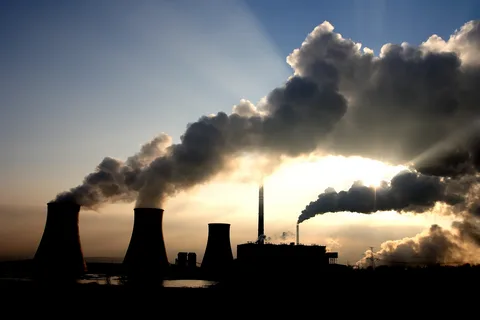New research published in the journal Science has revealed that air pollution particles from coal-fired power plants are more detrimental to human health than previously estimated. The study’s findings show that these particles are more than twice as likely to contribute to premature deaths as particles from other sources of air pollution.
The research team mapped the emissions from coal power plants in the United States and linked these emissions to the death records of Americans over the age of 65 using Medicare data. The results indicated that air pollutants released from coal power plants were associated with nearly half a million premature deaths of elderly Americans between 1999 and 2020.
However, the study also highlighted positive news: the number of deaths associated with coal power plants has significantly decreased since the mid-2000s. This reduction can be attributed to the installation of emissions scrubbers as mandated by federal regulations, as well as the closure of many coal plants by utility companies.
According to the study’s findings, coal air pollution was responsible for 55,000 deaths in the United States in 1999. By 2020, this number had dropped to 1,600. This decline can be attributed to the displacement of coal by natural gas and renewable energy sources for electricity generation in the country. However, globally, the use of coal is projected to increase in the coming years, which makes the study’s results even more urgent in terms of informing future policies.
The research builds upon previous landmark studies, such as the Harvard Six Cities Study in the 1990s, which established a connection between small airborne particles called PM2.5 and increased risk of premature death. Other studies have also linked PM2.5 to lung and heart diseases, cancer, dementia, and various other health issues.
PM2.5 particles can originate from different sources, including vehicle combustion, wood fires, and power plants. The emissions from coal power plants consist of a mixture of chemicals, including carbon, hydrogen, sulfur, and metals. When coal is burned, these chemicals are released into the atmosphere as gases or particles. The wind then carries them, where they interact with other chemicals present in the atmosphere.
To assess the risks associated with coal emissions on human health, the researchers studied how sulfur dioxide emissions from the 480 largest coal power plants in the U.S. since 1999 transformed into small particles known as coal PM2.5, as sulfur dioxide is a well-known pollutant. By linking the exposure to coal PM2.5 with Medicare records of approximately 70 million people from 1999 to 2020, the researchers were able to determine the number of deaths associated with coal PM2.5 exposure.
The statistical model used in the study accounted for other sources of pollution and various risk factors such as smoking, local weather conditions, and income level. The results consistently showed that PM2.5 particles from coal were twice as harmful as particles from other sources.
The number of deaths associated with individual power plants varied based on factors such as the plant’s emissions, wind patterns, and population density. Unfortunately, many U.S. coal power plants were situated upwind of densely populated areas on the East Coast, exacerbating their impact.
The study’s results can be found in an interactive online tool, allowing users to access the estimates of annual deaths associated with each U.S. power plant and observe the reduction in numbers over time in most coal plants.
Over the years, engineers have developed effective pollution control devices, such as scrubbers, that can significantly reduce pollution from coal power plants. The Environmental Protection Agency (EPA) has implemented regulations to encourage utilities using coal to install these devices. Consequently, sulfur dioxide emissions have decreased by about 90% in facilities with scrubbers and by 95% nationwide since 1999. The implementation of scrubbers and the closure of certain facilities have corresponded with a significant decline in deaths associated with each power plant.
The declining cost of natural gas due to advancements in fracking techniques, along with stricter regulations making coal plants more expensive to operate, has prompted utilities to transition from coal to natural gas and renewable energy sources. This shift has led to further reductions in air pollution. Currently, coal accounts for 27% of electricity generation in the U.S., down from 56% in 1999.
Globally, however, the future of coal usage is mixed. While the U.S. and several other countries are moving towards a future with significantly less coal, the International Energy Agency predicts that global coal use will continue to increase until at least 2025.
The study emphasizes that increases in coal use will have adverse effects on human health and the climate. To mitigate these negative impacts, the widespread implementation of emissions controls and a transition towards renewable energy sources are crucial.
*Note:
1. Source: Coherent Market Insights, Public sources, Desk research
2. We have leveraged AI tools to mine information and compile it



